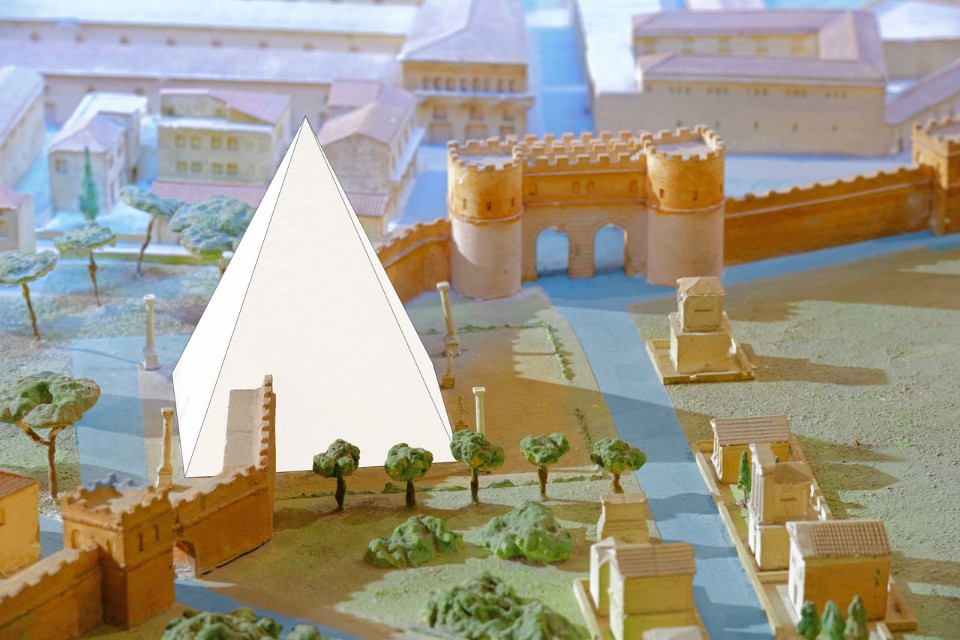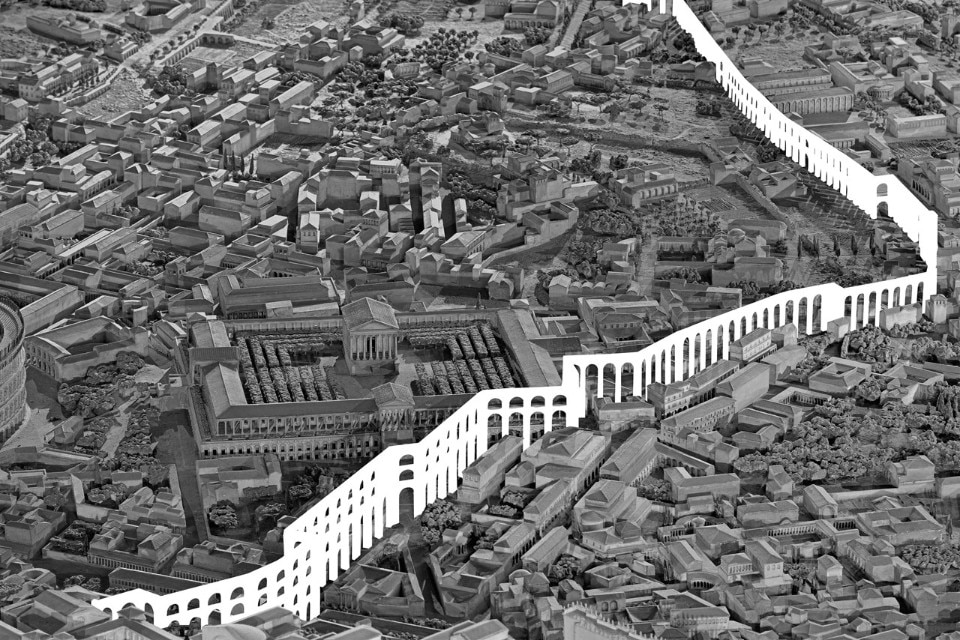
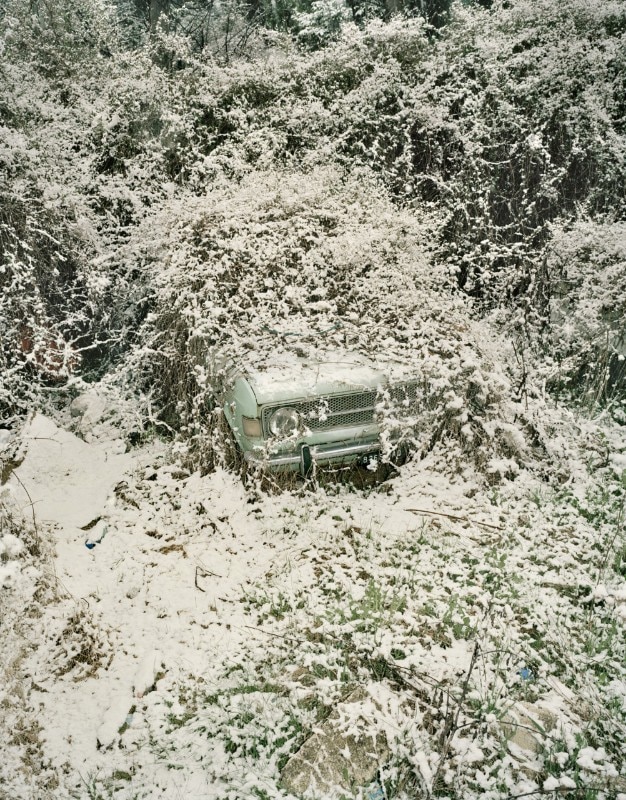
“From all this work”, continues Delogu, “a strong need emerges —obviously in different ways— for identity through a photograph of the present that can tell a story. To be able to regain possession of our lives, it becomes necessary to refute a priori this obsession with the past and look at the present as a possibility for letting go of it”.
Many photographers called upon to explore this theme, such as Olivo Barbieri who, in the new large-scale work Site-specific Roma 14, refers back to a previous piece made for the 2004 Rome Commission. While then he photographed Rome from a helicopter using the technique of selected focus, showing the city like a large-scale model, today ten years later, he photographs from above the model of the city held at the Museum of Roman Civilisation.
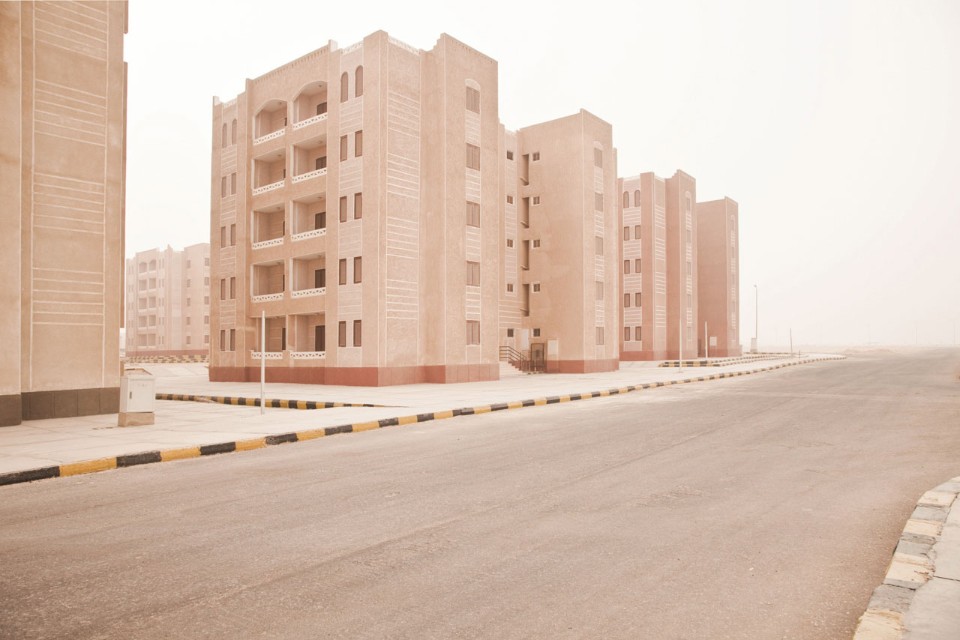
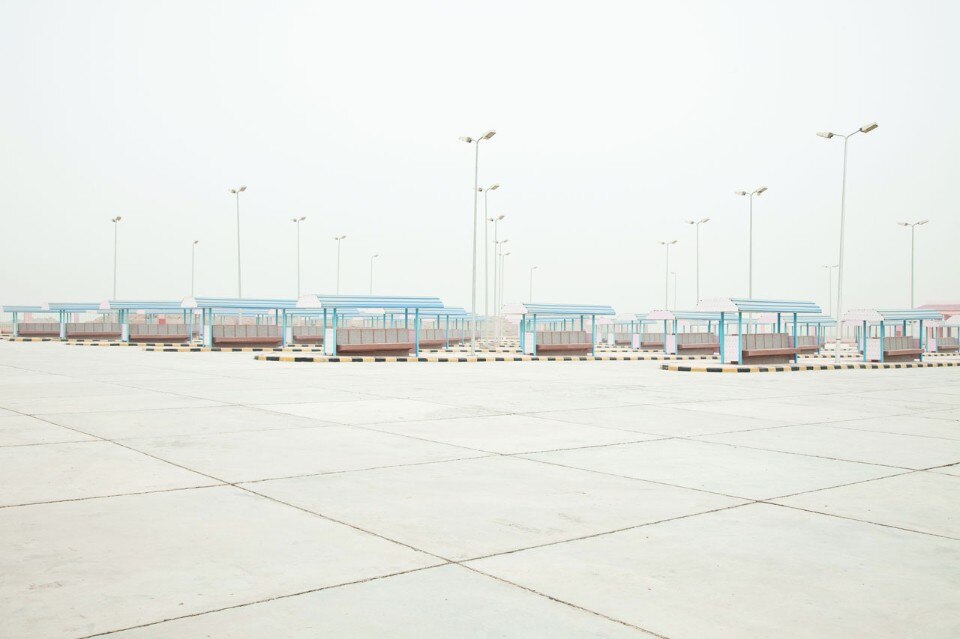
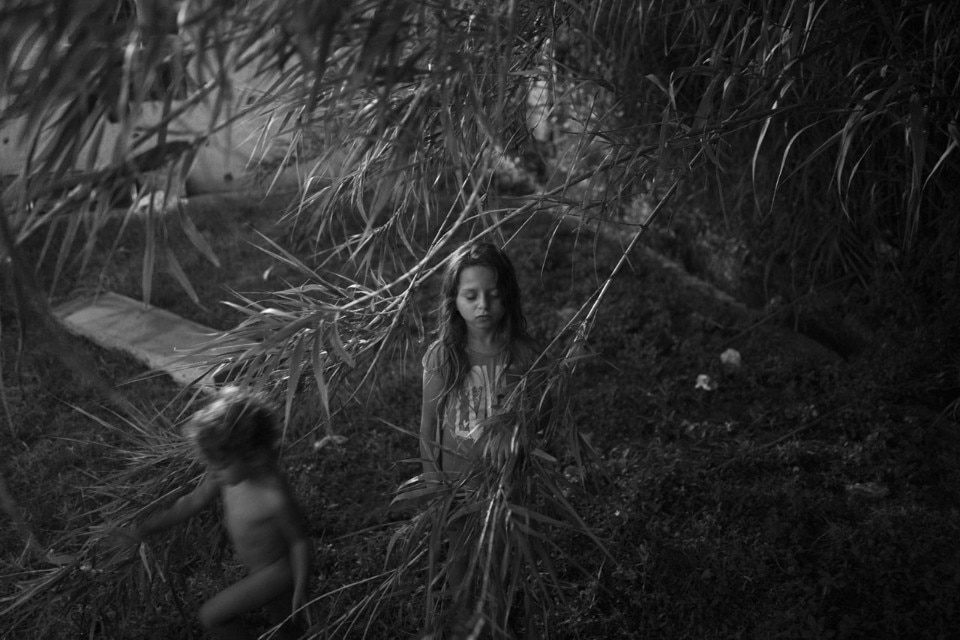
Visiting the exhibition creates a strange sensation. It is that of a present too present to want to admit, of a photographic mirror that one does not want to look into. “It is not uncomfortable”, Deluge is keen to point out “it is true, and always has been, that the Inferno is more alluring but in these works there is an incredible need for places and identity”.
As in one of the most real works, Displacement – New Town No Town by Giovanni Cocco and Caterina Serra. The project, where the photographs are accompanied by poetic epigraphs, portrays new places in Aquila: following the 2009 earthquake, the population lost its centre and it has been transferred to the new town, built in the suburbs, filled with loss and alienation.
until 17 January 2016
XIV Fotografia – Festival Internazionale di Roma
Il Presente
Museo d’Arte Contemporanea di Roma
via Nizza 138, Rome

